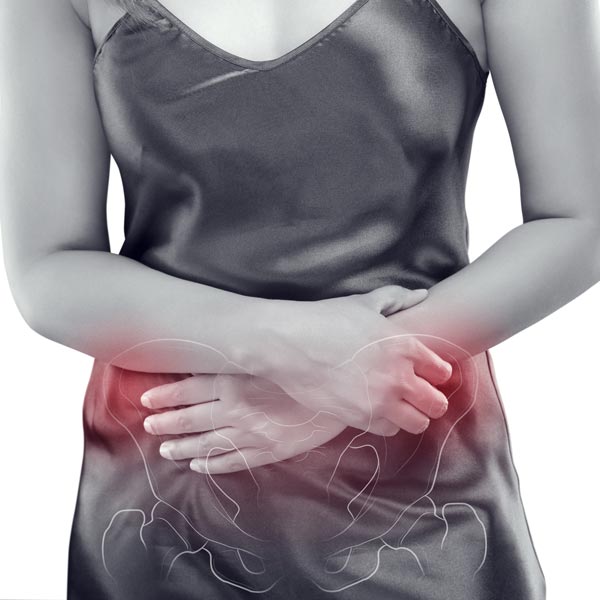When Are Pelvic Cramps Not Normal? (find the real underdiagnosed culprit)

Emma has had pelvic cramps on and off for seven months. At first, it did not cause any alarm because most of the time, the pain is manageable. She always thought that the pain would eventually disappear because it is common for women to experience pain in their pelvic region during the menstrual cycle.
But as time went on, the cramps became more severe and lasted longer. The dull ache that she experienced even got worse during her period, and her urge to urinate increased. She also noticed large and bulging veins in the near pelvic region.
Pelvic cramps are one of the most common issues faced by women. But despite how common pelvic cramps are, many individuals are still clueless about what's causing their feelings of discomfort. While many women head straight to their gynecologist, they still cannot find the correct diagnosis.
When pelvic pain lasts for over six months, it's time to see a vascular doctor to rule out possible underlying conditions.
What Causes Pelvic Cramps?
Many causes can contribute to pelvic pain. Some are harmless, while others are not. This section will look at what may be causing Emma's pain.
PMS or Menstrual Cramps
Many women experience pelvic cramps and pelvic pain during their menstrual cycle, usually two days before menstruation. It typically lasts for five days.
If pelvic pain coincides with your period, it's probably just pelvic cramps. The pain is caused by the increase in prostaglandins, which cause the uterus to contract when you have your period.
Urinary Tract Infection
Pelvic pain can also be a symptom of urinary tract infection (UTI) caused by a bacteria called E. Coli that enter the urethra and starts to multiply. This can be accompanied by a burning sensation when urinating and a strong urge to go to the bathroom.
Painful Ovulation (Mittelschmerz)
Ovulation, a common cause of pelvic pain, is the release of an egg during the menstrual cycle. Usually, the egg is released from the ovary during the middle of your cycle. This can cause sharp pain on one side of the abdomen. The pain can be mild or severe and can last anywhere from a few minutes to an hour.
Ectopic Pregnancy
This is when a fertilized egg implants itself in an incorrect location, usually in the fallopian tube. Symptoms can include but are not limited to abdominal pain, lower back pain, and irregular bleeding.
Appendicitis
Appendicitis is when there is inflammation in the lining of your appendix. It usually causes abdominal pain on the right side of your abdomen.
Irritable Bowel Syndrome (IBS)
IBS is a chronic gastrointestinal disorder characterized by abdominal pain and irregular bowel movements. It can cause long-lasting and recurring pain in the pelvic area.
Sexually Transmitted Infection
In some cases, if you have an STI, the pain can come from the pelvic region. These include:
- Gonorrhea
- Chlamydia
- Herpes
Pelvic Inflammatory Disease
Pelvic inflammatory disease is when there is an infection of the fallopian tubes, uterus, or ovaries. It can also cause severe pain. This occurs when the infection spreads and affects the mentioned pelvic organs.
Ovarian Cysts
Cysts in the ovaries are also common. The cysts can range in size, but they do not always cause pain. It is only when they grow large or when they release hormones that can cause discomfort.
Kidney Stones
Some people may experience severe pain in the lower back region together with pelvic pain. This may be due to kidney stones. It is caused by a hard mass that develops in the kidney.
If the stone travels to the ureter, which is the tube that connects the kidney to the bladder, it can cause pain in the pelvic region and the lower back region.
Pelvic Organ Prolapse
Pelvic organ prolapse is a severe condition that occurs when the regular support of organs in the pelvis is lost. It affects women who have gone through childbirth, and it is common among women who have weak pelvic floor muscles. When someone has pelvic organ prolapse, the pelvic organs drop into the vagina and cause severe pain.
Uterine Fibroids
Uterus fibroids are benign tumors found in the uterus. Fibroids can cause severe pain, and they are usually felt on one side of the abdomen.
Endometriosis
Endometriosis is a common condition where tissues similar to the endometrium are found outside the uterus, usually in the ovaries, the fallopian tubes, and the pelvic region. Therefore, the surrounding tissue can get irritated.
The Culprit: Pelvic Congestion Syndrome
After suffering from pelvic cramps for seven months and consulting with gynecologists, Emma finally went to a vascular doctor, where she was diagnosed with Pelvic Congestion Syndrome.
Pelvic Congestion Syndrome is believed to be caused by problems in the veins located in the pelvic area. However, healthcare providers are still trying to understand other possible causes today.
The veins carry the blood back to the heart, but the veins located in the lower abdomen do not work well for people who have this condition. In some cases, the veins dilate causing blood to pool in the pelvic region. This causes congestion and pelvic cramps.
Now that Emma has been able to determine the cause of her pain, it is time to treat it. Pelvic Congestion Syndrome is usually diagnosed through a minimally-invasive procedure called a venogram. Through this, patients like her can get back to everyday life without much pain and discomfort.
The Importance of Checking with a Healthcare Professional Cannot Be Understated
The pelvic cramps Emma felt hampered her day-to-day life for months. However, pelvic cramps can be easily treated when diagnosed early. If she had gone to a doctor when her pain started, it would not have caused her so much suffering.
If you experience pelvic pain accompanied by other symptoms such as increased blood pressure and shortness of breath, it's time to see a vascular doctor.

